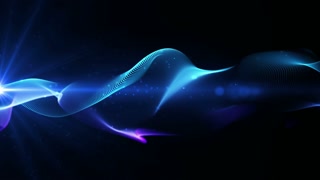EUROPE’S MYSTERY PEOPLE….
The researches of R. Frank, a scholar at the University of Iowa, suggest that the Basques were very much advanced in both navigational skills and technology long before the rise of the Roman Empire.
The Basques, she believes, are the last remnants of the megalith builders, who left behind dolmens, standing stones, and other rock structures all across Europe and perhaps even in eastern North America.
It’s true that certain facts set the Basque peoples apart from the other Europeans who have dominated the continent during the past 3,000 years.
The first mesolithic people from the Basque peninsula were without doubt the most experienced sailors of the Atlantic.
These people who populated the northwest coast of Europe also have a very special blood peculiarity, which their descendants are still living with today.
If that is the case, then surely Scotland, the outer Hebrides, and Orkney were populated much earlier than the ‘official’ records show.
It’s entirely possible that if there were no deer along the glaciated Atlantic coasts, the hunter-gatherers would have eaten raw seal.
The area was widely glaciated and a mini iceage would have ensured they didn’t stay there for very long at least.
It’s also becoming clearer that the first people came to County Antrim in Northern Ireland and when the mini iceage lasting a few centuries set in, they moved south along the east coast of Ireland where mesolithic remains, but no settlements have been found.
It may also have been possible that if the first people did settle on the west coasts of Ireland, they would have travelled back to the outer Hebrides of Scotland, or present day Britain when the mini iceage did set in.
At any rate, these people hung around in Ireland and Scotland for 3000 years hunting wild boar and goats which they brought with them from the Bay of Biscay, while the women were gathering plants and berries as mesolithic hunter-gatherers when the first celtic speaking neolithic settlers arrived.
The researches of R. Frank, a scholar at the University of Iowa, suggest that the Basques were very much advanced in both navigational skills and technology long before the rise of the Roman Empire.
The Basques, she believes, are the last remnants of the megalith builders, who left behind dolmens, standing stones, and other rock structures all across Europe and perhaps even in eastern North America.
It’s true that certain facts set the Basque peoples apart from the other Europeans who have dominated the continent during the past 3,000 years.
The Basque language is distinctly different to any other.
The Basques have the highest recorded level of Rh-negative blood (roughly twice that of most Europeans), as well as substantially lower levels of Type B and a higher incidence of Type O.
There are also some very probable technological feats of the Basques or their ancestors, which include:Recently unearthed British customs records have shown large Basque imports of beaver pelts from 1380-1433.“Stonehenge and similar megalithic structures.
A unique system of measurement based on the number 7 instead of 10, 12, or 60.
Regular visits to North America long before Columbus to fish and to trade for beaver skins.
The invention of a sophisticated navigational device called an ‘Abacus.’ (No relation to the common abacus.)”
The first mesolithic people from the Basque peninsula were without doubt the most experienced sailors of the Atlantic.
These people who populated the northwest coast of Europe also have a very special blood peculiarity, which their descendants are still living with today.
The Rhesus Negative Factor.
Dr.Luigi Cavalli-Sforza published a map of the populations with the highest percentage of their populations with Rh-negative blood and wrote:Did the first people to settle in Ireland arrive from Scotland in wooden boats 10,000 years ago as mesolthic hunter-gatherers?“Rh-negative genes are frequent in Europe, infrequent in Africa and West Asia, and virtually absent in East Asia and among the aboriginal populations of America and Australia. One can estimate degrees of relatedness by subtracting the percentage of Rh-negative individuals among, say, the English (16%) from that of the Basques (25%) to find a difference of nine percentage points. The highest percentage of people with Rh- blood is found in the Atlas mountains of Morocco(40%). The next highest are the Basques, reported in different publications as having between 25/32%, depending on location. The people of northwest Ireland, the Highland Scots and the western islanders of Norway all have between 16 and 25%, while the Lapps of Norway and Finland have between 5 and 7%”
If that is the case, then surely Scotland, the outer Hebrides, and Orkney were populated much earlier than the ‘official’ records show.
It’s entirely possible that if there were no deer along the glaciated Atlantic coasts, the hunter-gatherers would have eaten raw seal.
The area was widely glaciated and a mini iceage would have ensured they didn’t stay there for very long at least.
It’s also becoming clearer that the first people came to County Antrim in Northern Ireland and when the mini iceage lasting a few centuries set in, they moved south along the east coast of Ireland where mesolithic remains, but no settlements have been found.
It may also have been possible that if the first people did settle on the west coasts of Ireland, they would have travelled back to the outer Hebrides of Scotland, or present day Britain when the mini iceage did set in.
At any rate, these people hung around in Ireland and Scotland for 3000 years hunting wild boar and goats which they brought with them from the Bay of Biscay, while the women were gathering plants and berries as mesolithic hunter-gatherers when the first celtic speaking neolithic settlers arrived.
FURTHER READING:
WIKIPEDIA: A history of the Basque people
AMERICA BEFORE COLUMBUS
NOTES ABOUT THE BASQUE PEOPLE
BEAUTIFUL BASQUE COUNTRY
Thanks to: http://outlawjimmy.com






 Sat Mar 23, 2024 11:33 pm by globalturbo
Sat Mar 23, 2024 11:33 pm by globalturbo

